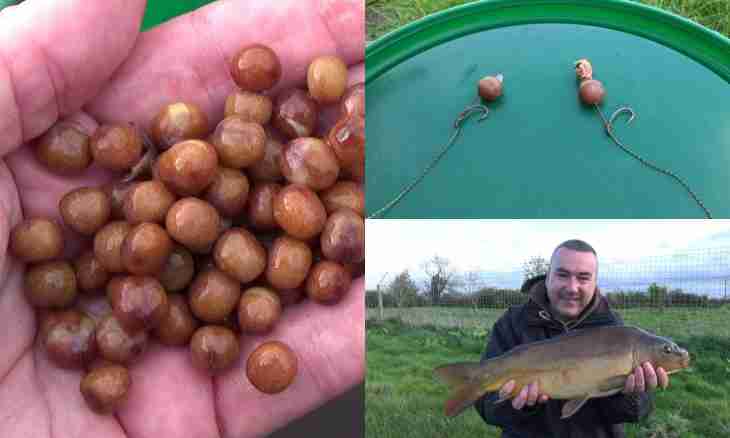The carp is a valuable large food fish and subject to cultivation in ponds. Artificial cultivation of a carp – business quite feasible. Cultivation of a carp can provide his artificial feeding. Without introduction of forages, on natural resources of a reservoir in a midland it is possible to grow up in a year no more than 20 kg of fish in terms of 0.1 hectares, and with fertilizing – several times it is more. Therefore the person who decided to be engaged in cultivation of carps needs to know how it is correct to feed them.
Instruction
1. The importance for growth and life of fish is played by the food supply consisting of natural food and the prepared forages. Artificially prepared forages are grain wastes of wheat, barley, corn, etc., cake and compound feed. If compound feed easily crumbles, then knead it in the form of the dense test. Grains of cereals have to be bulked up, and grains of a castor-bean tree or haricot - steamed.
2. You bring food in a pond manually and by means of feeding troughs. Manually you bring food for a carp on strictly certain fodder points or strips on sites of a reservoir, free from water vegetation, with solid soil. In ponds with soft soil use tables feeding troughs. It is possible to apply feeding troughs both passive, and active (the forages dosing delivery) types. Pendular automatic feeders and aero feeding troughs are very effective.
3. The standard daily rate of feeding is defined by the mass of fishes and water temperature. With a weight up to 0.5 g the quantity of a forage has to be 100%, the mass of fishes of 500 g — 2.8% of their weight. The juveniles of a carp should be fed in each hour. After achievement of mass of 10 g the number of meals can be reduced. At the water temperature of 24 °C the number of feedings can not exceed 6, at 14 — 20 °C — 4 and at — 14 °C fishes need to give food 2 — 3 times a day. In the winter at water temperature above 6 °C the fish also should be fed, but the daily diet has to make no more than 2% of mass of fish.
4. Increase in number of feedings by additional food also has to be proportional to decrease in availability of natural products, i.e. at the minimum maintenance of a natural forage - the maximum number of meals, and, on the contrary, during the maximum development of natural food - the minimum quantity of portions. In the presence of the brought power supply network it is recommended to install the equipment (it is desirable with pneumatic dispersion of a forage for a large-scale complex), which will provide continuous giving of food during the day.
5. You feed a carp in one and too time, on constantly allocated place. It develops a conditioned reflex at fish, she finds a forage quicker, acquires it better, and food, in turn, does not manage to sour. Control as fish eats a forage. If it in any places remains, it reduce distribution next day. So, artificial cultivation of a carp - business quite feasible.

